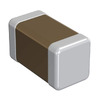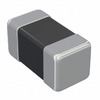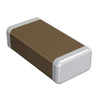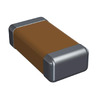What Is Ball Grid Array (BGA)? Benefits, Types, Assembly Process
2024-09-09
2604
Catalog

Figure 1: Ball Grid Array (BGA)
Why Ball Grid Array (BGA) Packages Are Preferred?
A Ball Grid Array (BGA) is a type of surface-mount packaging used for integrated circuits (ICs). It features solder balls on the underside of the chip instead of traditional pins that makes it ideal for devices that need high connection density in a small space. Ball Grid Array (BGA) packages represent a major improvement over the older Quad Flat Pack (QFP) design in electronics manufacturing. QFPs, with their thin & tightly spaced pins, are vulnerable to bending or breaking. It makes repairs challenging and expensive, especially for circuits with many pins.
The closely packed pins on QFPs also pose problems during the design of printed circuit boards (PCBs). The narrow spacing can cause track congestion, making it harder to route connections efficiently. This congestion can hurt both the layout & the performance of the circuit. Moreover, the precision required to solder QFP pins increases the risk of creating unwanted bridges between pins, potentially causing the circuit to malfunction.
BGA packages solve many of these issues. Instead of fragile pins, BGAs use solder balls placed underneath the chip that reduces the chance of physical damage and allows for a more spacious, less congested PCB design. This layout makes it easier to manufacture, while also improving the reliability of solder joints. As a result, BGAs have become the industry standard. Using specialized tools & techniques, BGA technology not only simplifies the manufacturing process but also enhances the overall design and performance of electronic components.
Benefits of Ball Grid Array (BGA) Technology
Ball Grid Array (BGA) technology has transformed the way integrated circuits (ICs) are packaged. That leads to improvements in both functionality & efficiency. These enhancements not only streamline the manufacturing process but also benefit the performance of the devices using these circuits.

Figure 2: Ball Grid Array (BGA)
One of the advantages of BGA packaging is its efficient use of space on printed circuit boards (PCBs). Traditional packages place connections around the edges of the chip, taking up more room. BGA packages, however, position the solder balls beneath the chip, which frees up valuable space on the board.
BGAs also offer superior thermal & electrical performance. The design allows for power & ground planes, reducing inductance and ensuring cleaner electrical signals. This leads to improved signal integrity, which is important in high-speed applications. Plus, the layout of BGA packages facilitates better heat dissipation, preventing overheating in electronics that produce a lot of heat during operation, such as processors & graphics cards.
The assembly process for BGA packages is also more straightforward. Instead of needing to solder tiny pins along the edge of a chip, the solder balls under a BGA package provide a more robust & reliable connection. This results in fewer defects during manufacturing and contributes to higher production efficiency, particularly in mass production environments.
Another benefit of BGA technology is its ability to support slimmer device designs. BGA packages are thinner than older chip designs that allows manufacturers to create sleeker, more compact devices without sacrificing performance. This is especially important for portable electronics like smartphones & laptops, where size and weight are critical factors.
In addition to their compactness, BGA packages make maintenance & repairs easier. The larger solder pads beneath the chip simplify the process of reworking or updating the board, which can extend the life of the device. This is beneficial for high-tech equipment that requires long-term reliability.
Overall, the combination of space-saving design, enhanced performance, simplified manufacturing, and easier repairs has made BGA technology the preferred choice for modern electronics. Whether in consumer devices or industrial applications, BGAs offer a reliable & efficient solution for today's complex electronic demands.
Understanding the Ball Grid Array (BGA) Package
Unlike the older Quad Flat Pack (QFP) method that connects pins along the edges of the chip, BGA uses the underside of the chip for connections. This layout frees up space & allows for more efficient use of the board, avoiding the constraints associated with pin size and spacing.
In a BGA package, connections are arranged in a grid underneath the chip. Instead of traditional pins, small solder balls are used to form the connections. These solder balls match up with corresponding copper pads on the printed circuit board (PCB), creating stable & reliable contact points when the chip is mounted. This structure not only improves connection durability but also simplifies the assembly process, as aligning and soldering the components is more straightforward.
One of the advantages of BGA packages is their ability to manage heat more effectively. By reducing the thermal resistance between the silicon chip & the PCB, BGAs help dissipate heat more efficiently. This is especially important in high-performance electronics, where managing heat is important for maintaining stable operation and extending the lifespan of the components.
Another benefit is the shorter leads between the chip & the board, thanks to the layout on the underside of the chip carrier. This minimizes lead inductance, improving signal integrity and overall performance. Thus, it makes BGA packages the preferred option for modern electronic devices.
Different Variants of Ball Grid Array (BGA) Packages

Figure 3: Ball Grid Array (BGA) Package
Ball Grid Array (BGA) packaging technology has evolved to address the varied needs of modern electronics, from performance & cost to size and heat management. These diverse requirements have led to the creation of several BGA variants.
Moulded Array Process Ball Grid Array (MAPBGA) is designed for devices that don't require extreme performance but still need reliability & compactness. This variant is cost-effective, with low inductance, making it easy to surface-mount. Its small size and durability make it a practical choice for a broad range of low to mid-performance electronics.
For more demanding devices, the Plastic Ball Grid Array (PBGA) offers enhanced features. Like the MAPBGA, it provides low inductance & easy mounting, but with added copper layers in the substrate to handle higher power requirements. This makes PBGA a good fit for mid to high-performance devices that need more efficient power dissipation while maintaining dependable reliability.
When managing heat is concern, the Thermally Enhanced Plastic Ball Grid Array (TEPBGA) excels. It uses thick copper planes within its substrate to efficiently draw heat away from the chip, ensuring that thermally sensitive components operate at peak performance. This variant is ideal for applications where effective thermal management is a top priority.
The Tape Ball Grid Array (TBGA) is designed for high-performance applications where superior heat management is required but space is limited. Its thermal performance is exceptional without the need for an external heatsink, making it ideal for compact assemblies in high-end devices.
In situations where space is particularly constrained, Package on Package (PoP) technology offers an innovative solution. It allows stacking multiple components, such as placing a memory module directly on top of a processor, maximizing functionality within a very small footprint. This makes PoP highly useful in devices where space is at a premium, like smartphones or tablets.
For ultra-compact devices, the MicroBGA variant is available in pitches as small as 0.65, 0.75, & 0.8mm. Its tiny size allows it to fit into densely packed electronics, making it a preferred option for highly integrated devices where every millimeter counts.
Each of these BGA variants showcases the adaptability of BGA technology, providing tailored solutions to meet the ever-changing demands of the electronics industry. Whether it's cost-effectiveness, thermal management, or space optimization, there is a BGA package suited for virtually any application.
Ball Grid Array (BGA) Assembly Process
When Ball Grid Array (BGA) packages were first introduced, there were concerns about how to assemble them reliably. Traditional Surface Mount Technology (SMT) packages had accessible pads for easy soldering, but BGAs presented a different challenge due to their connections being underneath the package. This raised doubts about whether BGAs could be reliably soldered during production. However, these concerns were quickly put to rest when it was discovered that standard reflow soldering techniques were highly effective at assembling BGAs, resulting in consistently reliable joints.

Figure 4: Ball Grid Array Assembly
The BGA soldering process relies on precise temperature control. During reflow soldering, the entire assembly is heated uniformly, including the solder balls underneath the BGA package. These solder balls are pre-coated with the exact amount of solder required for the connection. As the temperature rises, the solder melts & forms the connection. Surface tension helps the BGA package self-align with the corresponding pads on the circuit board. The surface tension acts as a guide, ensuring that the solder balls stay in place during the heating phase.
As the solder cools, it goes through a brief phase where it remains partially molten. This is important for allowing each solder ball to settle into its correct position without merging with neighboring balls. The specific alloy used for the solder and the controlled cooling process ensure the solder joints form correctly & maintain separation. This level of control helps for the success of BGA assembly.
Over the years, the methods used to assemble BGA packages have been refined and standardized, making them an integral part of modern electronics manufacturing. Today, these assembly processes are seamlessly incorporated into manufacturing lines, & the initial concerns about the reliability of BGAs have largely disappeared. As a result, BGA packages are now considered a dependable & effective choice for electronic product designs, offering durability & precision for complex circuitry.
Challenges and Solutions
One of the major challenges with Ball Grid Array (BGA) devices is that the soldered connections are hidden beneath the chip. That makes them impossible to inspect visually using traditional optical methods. This initially raised concerns about the reliability of BGA assemblies. In response, manufacturers have fine-tuned their soldering processes, ensuring that heat is applied evenly across the assembly. This uniform heat distribution is needed for melting all the solder balls properly & securing solid connections at each point within the BGA grid.
While electrical testing can confirm whether the device is functioning, it's not enough to guarantee long-term reliability. A connection might seem electrically sound during initial tests, but if the solder joint is weak or improperly formed, it could fail over time. To address this, X-ray inspection has become the go-to method for verifying the integrity of BGA solder joints. X-rays provide a detailed look at the soldered connections beneath the chip, allowing technicians to spot any potential issues. With the correct heat settings & precise soldering methods, BGAs typically exhibit high-quality joints, enhancing the overall reliability of the assembly.
Reworking BGA-Equipped Boards
Reworking a circuit board that uses BGAs can be a delicate & complex process, often requiring specialized tools & techniques. The first step in reworking involves removing the faulty BGA. This is done by applying localized heat directly to the solder underneath the chip. Specialized rework stations are equipped with infrared heaters to carefully heat the BGA, thermocouples to monitor the temperature, & a vacuum tool to lift the chip once the solder has melted. It is important to control the heating so that only the BGA is affected, preventing damage to nearby components.
Repair and Reballing of BGAs
After a BGA has been removed, it can either be replaced with a new component or, in some cases, refurbished. A common repair method is reballing that involves replacing the solder balls on a BGA that is still functional. This is a cost-effective option for expensive chips, as it allows the component to be reused rather than discarded. Many companies offer specialized services & equipment for BGA reballing, helping to extend the life of valuable components.
Despite early concerns about the difficulty of inspecting BGA solder joints, the technology has made significant strides. Innovations in printed circuit board (PCB) design, improved soldering techniques such as infrared reflow, and the integration of reliable X-ray inspection methods have all contributed to resolving the initial challenges associated with BGAs. Furthermore, advancements in rework & repair techniques have ensured that BGAs can be reliably used in a wide range of applications. These improvements increased the quality & dependability of products that incorporate BGA technology.
Conclusion
The adoption of Ball Grid Array (BGA) packages in modern electronics has been driven by their numerous benefits, including superior thermal management, reduced assembly complexity, & space-saving design. Overcoming initial challenges such as hidden solder joints & reworking difficulties, BGA technology has become the preferred choice in diverse applications. From compact mobile devices to high-performance computing systems, BGA packages provide a reliable & efficient solution for today’s complex electronics.
 ABOUT US
Customer satisfaction every time. Mutual trust and common interests.
ABOUT US
Customer satisfaction every time. Mutual trust and common interests.
function test. The highest cost-effective products and the best service is our eternal commitment.
Hot Article
- Are CR2032 and CR2016 Interchangeable
- MOSFET: Definition, Working Principle and Selection
- Relay Installation and Testing, Interpretation of Relay Wiring Diagrams
- CR2016 vs. CR2032 What’s the difference
- NPN vs. PNP: What's the Difference?
- esp32 vs stm32: which microcontroller is better for you?
- LM358 Dual Operational Amplifier Comprehensive Guide: Pinouts, Circuit Diagrams, Equivalents, Useful Examples
- CR2032 VS DL2032 VS CR2025 Comparison Guide
- Understanding the Differences ESP32 and ESP32-S3 Technical and Performance Analysis
- Detailed Analysis of RC Series Circuit
 Exploring IC 7400: Specifications, Pin Configuration, and Practical Applications
Exploring IC 7400: Specifications, Pin Configuration, and Practical Applications
2024-09-09
 Comprehensive Guide to Power Supply Circuits
Comprehensive Guide to Power Supply Circuits
2024-09-06
Frequently Asked Questions [FAQ]
1. What is a Ball Grid Array (BGA) package?
A Ball Grid Array (BGA) is a form of surface-mount packaging used for integrated circuits (ICs). Unlike older designs that have pins around the edges of the chip, BGA packages have solder balls placed underneath the chip. Because of this design, it can hold more connections on one area and is thus smaller, easing the building of compact circuit boards.
2. How does BGA improve circuit design?
Since BGA packages put the connections directly beneath the chip, this opens up space on the circuit board, which simplifies the layout & reduces clutter. With this, further improvements in performance are achieved but also allow engineers to build smaller, more efficient devices.
3. Why are BGA packages superior as opposed to QFP designs?
Because BGA packages use solder balls instead of the fragile pins in QFP designs, they are much more reliable & robust. These solder balls are positioned underneath the chip and don't have a big chance of getting damaged. This also makes life easier for the manufacturing process to result in more uniform outputs with lesser chances of defects.
4. What are the major advantages of BGA?
Besides, BGA technology allows for better dissipation of heat, improvement in electrical performance, & a higher connection density. Besides, it makes the assembly process more handleable, further assisting in smaller, more reliable devices to provide long-time performance and efficiency.
5. Can BGAs be inspected after assembly?
Because the solder joints are under the chip itself, no physical inspection is possible after the assembly. However, the quality of the solder connections is checked with the help of special tools like X-ray machines to make sure there are no defects in them after the assembly.
6. How are BGAs soldered during production?
BGAs are attached onto the board during manufacturing by a process called reflow soldering. When the assembly is heated, the solder balls melt & form secure connections between the chip and the board. The surface tension in melted solder also acts to perfectly align the chip with respect to the board for a good fit.
7. Are there different kinds of BGA packages?
Yes, there are types of BGA packages designed for specific applications. For example, TEPBGA is suited for applications which generate high heat, while MicroBGA is applied to applications that have very compact requirements on packaging.
8. What are the issues related to BGA packages?
One of the major downsides of using BGA packages involves difficulties in inspecting or reworking solder joints due to their concealment by the chip itself. With the latest tools like X-ray inspection machines & rework-specific workstations, these tasks are vastly simplified, and if problems do arise, they can easily be fixed.
9. How would you go about reworking faulty BGAs?
If a BGA is faulty, then the chip is carefully removed by heating up the solder balls to melt them. If the chip is still functional itself, it may then be possible to replace the solder balls using a process called reballing, allowing the chip to be reused.
10. Where are BGA packages normally used?
Everything from smartphones to other consumer electronics & further up to high-end systems, like servers, utilizes BGA packages today. Consequently, this also makes them highly desirable due to their reliability and efficiency in application-from small gadgets to large-scale computing systems.
Hot Part Number
 K102K15X7RF5TL2
K102K15X7RF5TL2 GRM0225C1E2R8CA03L
GRM0225C1E2R8CA03L UVK105CG4R3JW-F
UVK105CG4R3JW-F GRM3195C2A432JA01D
GRM3195C2A432JA01D CGA8R2NP02A104J320KA
CGA8R2NP02A104J320KA GCM2165C2A121JA16D
GCM2165C2A121JA16D 12102U391FAT4A
12102U391FAT4A 1210GA151KAT1A
1210GA151KAT1A 12061A301GA12A
12061A301GA12A TAJA475M025RNJ
TAJA475M025RNJ
- AT29C512-12PI
- VI-25H-EU
- VI-272-IY
- RT0402DRD075K6L
- IRF7343TRPBF
- PIC16LC773/SS
- 2MBI400U2B060
- TPS3307-33DRG4
- XC7A15T-2FGG484I
- STP1612PW05MTR
- LMV339IPWRG4
- LM335AMX/NOPB
- LP2986AIMM-3.0
- T495D476K020ATE200
- TPS71733DCKT
- B72210S2301K101
- BQ27500YZGT-V130
- ICS9P956AGLF
- M36L0T8060T3ZSPE
- MPC82G516AF
- MX29F040QC-70
- PC48F4400POVB
- PM8315-PI-P
- S908GZ60CFAE
- SN11086B
- SP7800AJS
- TLE7240SL_A
- AIC2350GV5
- N25Q032A13EF640F
- SQJ963EP-T1-GE3
- TVP9000ZDS
- DSP2A-L2-12V
- ICS8302AMIT
- XC9572-7TQ100I
- VY22520A2
- AU6990A52-GHL-GR
- LC4128V-75TN128
- MT9079AP1
- N25Q256A13EF8A0F